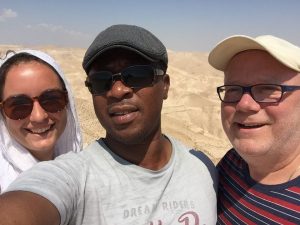When we, Conrad, Annemie, and Henri—all members of the gemeenschapsploeg/community team of Sint-Kwinten—left Belgium for the Holy Land, none of us knew what an impact our pilgrimage would have on us, individually and collectively.
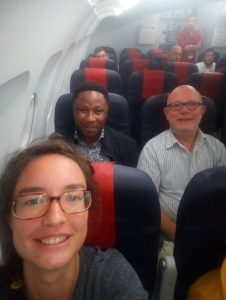
In the middle of the night of 4 September we landed at a somewhat chaotic airport of Tel Aviv, to leave immediately by rental car for the Sea of Galilee. Our destination was Tabgha, traditionally accepted as the place of the miracle of the multiplication of the loaves and fishes (Mark 6:30-46) and Jesus’ fourth Resurrection appearance (John 21: 1-24).


“As he was saying these things, a cloud came and overshadowed them, and they were afraid as they entered the cloud. And a voice came out of the cloud, saying, ‘This is my Son, my Chosen One; listen to him!” (Luke 9:28-36).
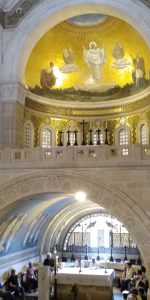
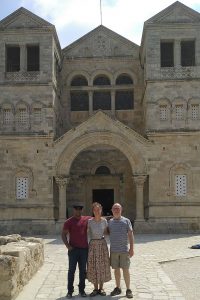
Each of our visits was accompanied by the reading the Gospel, the praying of the rosary with the many small and great intentions for our families, friends, faith communities, the Church and the world. We also celebrated the Eucharist each day in one language or another.

Our journey continued via Tiberias to Capernaum. Cited in all four Gospels, Capernaum is the hometown of the tax collector Matthew and is located not far from Bethsaida, hometown of the apostles Simon Peter, Andrew, James, and John. Here Jesus healed Simon Peter’s mother-in-law of a fever (Luke 4:38-39). This is also where Jesus healed the servant of a Roman centurion (Luke 7:1-10; Matthew 8:5) and the paralytic lowered by friends through the roof (Mark 2:1-12; Luke 5:17-26).
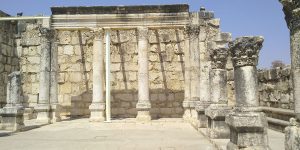
It was in the synagogue of Capernaum that Jesus spoke the controversial words: “This is the bread that came down from heaven, not like the bread the fathers ate, and died. Whoever feeds on this bread will live forever.” When many of his disciples heard it, they said, “This is a hard saying; who can listen to it” (John 6: 58-60). For us, however, it is a deep moment to reflect on the place of the Eucharist in our own lives.

We visited the Mount of Beatitudes, where Jesus is believed to have delivered the Sermon on the Mount. “Blessed are the merciful, for they shall receive mercy” (Matthew 5:7).
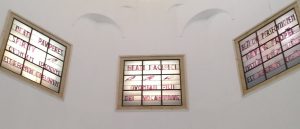
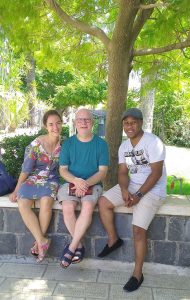
We also visited the source of the Jordan River, had lunch in a Druze village, and went to a lookout point on the Golan Heights, from where we could observe Syria.


And she conceived of the Holy Spirit.
Be it done unto me according to thy word.
And dwelt among us.

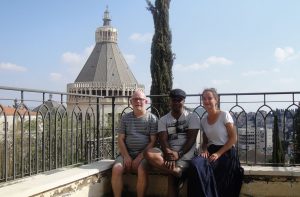
“And Jesus, full of the Holy Spirit, returned from the Jordan and was led by the Spirit in the wilderness for forty days, being tempted by the devil. And he ate nothing during those days” (Luke 4,1).


Eventually we reached the Holy City of Jerusalem, of which Jesus said:
“O Jerusalem, Jerusalem, city that kills the prophets and stones those who are sent to it! How often would I have gathered your children together as a hen gathers her brood under her wings, and you were not willing! See, your house is left to you desolate. For I tell you, you will not see me again, until you say, ‘Blessed is he who comes in the name of the Lord’” (Matthew 23:37-39).
We stayed in Ein Karem in a Casa Nova, a guesthouse of the Franciscan Friars.

Our stay in this ancient city, holy site of three monotheistic world religions, divided into four districts, with all possible smells, colors, and people, was for us a moving experience. Passing through all the hustle and bustle and commerce, we went earlier and earlier in the morning to the Church of the Holy Sepulchre, where we could actually touch the place where the cross stood and stay for a while on the spot where Jesus was buried and rose from the dead. The words of the liturgy acquired a stronger meaning:
“We proclaim your death, O Lord, and profess your Resurrection until you come again”.
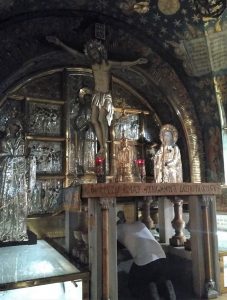

We visited the the tomb of King David, the Mount of Olives, the room of the Last Supper, and the Garden of Gethsemane, and we prayed the Stations of the Cross along the Via Dolorosa.

Also impressive was Mount Zion, with its Temple Mount, the Dome of the Rock, and the Western Wall, also called the Wailing Wall, the only remains of the Temple destroyed in the year 70 AD. We could touch the wall with our hands and heads, and let our prayers ascend in silence.
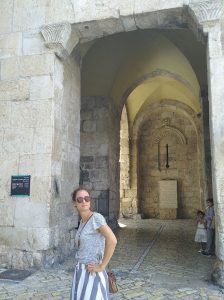
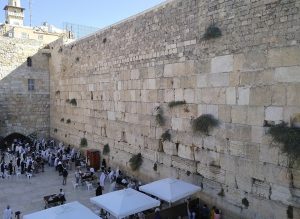
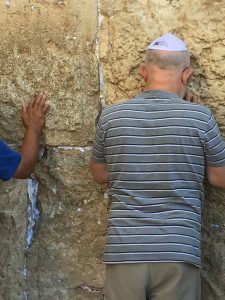

Public transportation brought us to Bethlehem on the West Bank in Palestine. It was a profound experience as we reached the birthplace of the Bread of Life, having passed checkpoints, controls and the infamous West Bank wall. We visited the Basilica of the Nativity, where we were able to be alone for some minutes at the place where, according to tradition, the Savior of the world was born.
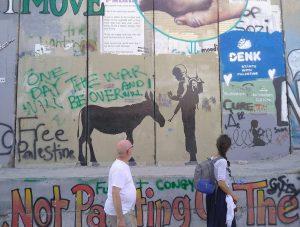
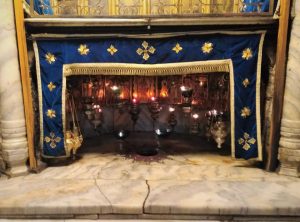
We stopped by the Bethlehem Icon Center, where Annemie had followed a course in writing icons, and the Milk Cave, where, according to a tradition, Mary breastfed Jesus for the last time before fleeing to Egypt. Here we also eat the best falafel in the world.
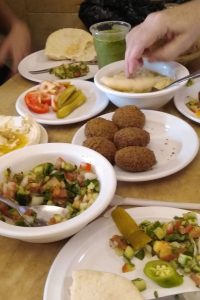
At the baptismal site in Qasr al-Yahud, along both the Israeli and Jordanian sides, soldiers kept guard in full armor. What a deeply moving moment when we joined a Polish group and their priest, who poured water from the Jordan over our heads and blessed us. “The next day again John was standing with two of his disciples, and he looked at Jesus as he walked by and said, ‘Behold, the Lamb of God.’ The two disciples heard him say this, and they followed Jesus” (John 1: 35-37). Likewise for the three of us, and for all those who were blessed that day, a call to follow Jesus.
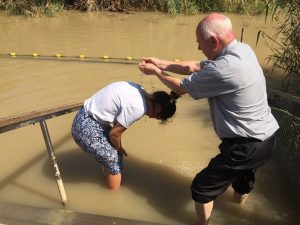
In Ein Karem itself we visited both the church of the Visitation, where Mary sung her Magnificat (Luke 1:46–55 , and the birthplace of St. John the Baptist, where Zechariah sung his Benedictus (Luke 1:68-79).
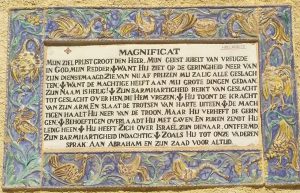
A unique experience was certainly our visit to the St. Vincent home for children and young people with severe psychological and physical disabilities, where Annemie had done volunteer work for a year. With a few of the children we went to eat an ice cream, just to keep our feet on the (holy) ground.
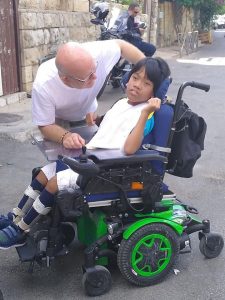
“Jerusalem, we pray that you will have peace, and that all will go well for those who love you” (Psalm 122:6).
